Where We Stand with Generic Drug Approvals and Authorized Generics
Summary
Patient access to high-quality, low-cost generic drugs continues to increase, due to a record number of generic approvals by the FDA in fiscal year 2019.In a recent statement, former Acting FDA Commissioner Norman E. Sharpless, MD, attributed the strong performance to ongoing efforts aimed at strengthening the FDA’s generic drug program under the Drug Competition Action Plan and the Generic Drug User Fee Amendments.
The FDA issued a total of 1,171 generic drug approvals in the fiscal year ending September 30. That included 935 full approvals and 236 tentative approvals, exceeding the previous record of 971 approvals in fiscal 2018, according to the 2019 fiscal year data recently released.
“We’re encouraged to see that the pipeline of generic drug applications is strong and that there is ongoing interest in the development of generic versions of complex drugs and other drugs with inadequate generic competition,” Sharpless said.
Steady growth
Among the approvals in 2019 were 125 applications for drugs that previously had no generic competition. These medications, which provide more affordable treatment options for patients, included an emergency opioid overdose treatment, as well as drugs for pulmonary arterial hypertension, breast cancer, seizures, depression and various infections.
Total generic approvals in 2019 increased by 20.5% over the previous year and are up 134% since 2014 (see chart).

Bolstering the Generic Drug Program
The FDA has taken several steps in recent years to accelerate the availability of safe and effective generics and improve the predictability of the generic review process. Through the imposition of user fees across the generic industry, the Generic Drug User Fee Amendments of 2012 has enabled greater predictability and timeliness surrounding generic drug application reviews.
The FDA additionally is pursuing multiple initiatives through 2017’s Drug Competition Action Plan. These include improving the efficiency of the generic development, review, and approval processes, maximizing scientific and regulatory clarity surrounding complex generic drugs, and closing loopholes that enable brand-name drug companies to delay generic competition.
“In the coming months, we plan to publish additional guidance and take other important policy steps to assist generic applicants, including planning additional conferences on generic drug development to further engage with stakeholders and generic drug developers,” Sharpless said.
Generic Growth
Generic drugs have provided Americans with safe, effective, and lower-cost alternatives to brand-name medications for more than 30 years. Unbranded generics today fill 85% of U.S. prescriptions, up from 40% in 2005. Collectively, they saved the American healthcare system an estimated $2 trillion between 2009 and 2018.
Essentially pharmaceutical replicas—or bioequivalents—of brand-name drugs, generics possess the same active ingredients as the originals and provide equivalent efficacy, safety, side-effects, and risks.
Manufacturers are able to bring generics to market once the patent protections and market exclusivities on the original product have expired.
Since generic manufacturers avoid the initial cost of developing and marketing the drug as a new compound, they are able to price a generic substantially lower than its brand-name counterpart. Prices may be further reduced if additional generic manufacturers enter the market for a particular drug.
Today’s boon in generics was set in motion in 1984 with the Hatch-Waxman Act, a regulatory framework that balanced the societal need of greater access to affordable drugs with drug manufacturers’ expectations of an equitable return on their development investment.
Authorized Generics
As generic market share has increased, some brand-name manufacturers have attempted to blunt the competition by releasing authorized generic versions of their own brand-name products ahead of generic manufacturers. Defined by the FDA Amendments Act of 2007, these authorized generics are exactly the same as the brand-name product, with the exception of the name, and are marketed by the brand manufacturer or an authorized company under the same New Drug Application (NDA). The price point typically is lower than the brand-name original, but may not be as low as a generic approved through the Abbreviated NDA pathway from another sponsor.
Although manufacturers are not required to submit a separate NDA to market an authorized generic, the FDA does require that the NDA holder notify the agency if it intends to sell an authorized generic. The NDA holder may market both the authorized generic and the brand-name product at the same time. They have different prices.
As of Sept. 30, 2019, 1,215 authorized generics were available in the US, according to the FDA. Last spring, Eli Lilly rolled out an authorized generic version of its Humalog injectable insulin (insulin lispro injection 100 units/mL) priced 50% lower than the branded original. In January, a study by the Health Care Cost Institute showed the price of insulin had doubled between 2012 and 2016.
Questions Remain Regarding Rollover of Authorized Generics
For some authorized generic manufacturers, significant questions loom ahead of a March 23, 2020, statutory deadline that will reclassify certain biologic drugs approved through the FD&C. The biologics in question will be licensed through the Public Health Service Act (PHSA) on March 23 as 351(a)s. Because neither a framework nor a precedent for authorized biologics exist within the PHSA, uncertainty surrounds the status of current authorized generics expected to rollover in 2020.
To receive Avalere updates, connect with us.
Find out the top 2020 healthcare trends to watch.





